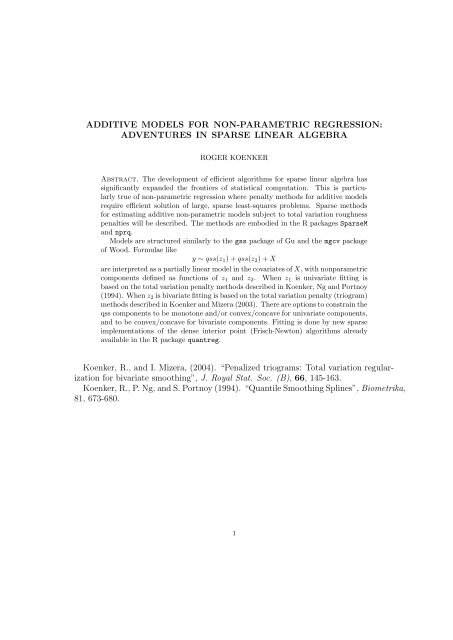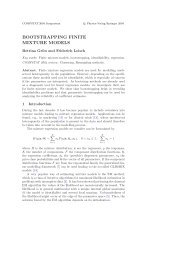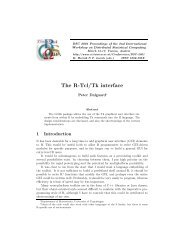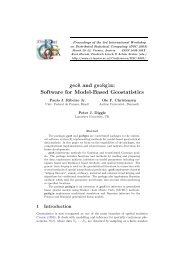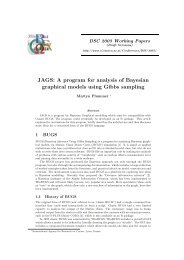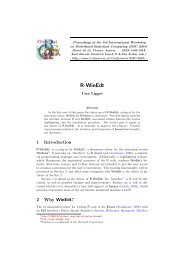Embedding R in Windows applications, and executing R remotely
Embedding R in Windows applications, and executing R remotely
Embedding R in Windows applications, and executing R remotely
Create successful ePaper yourself
Turn your PDF publications into a flip-book with our unique Google optimized e-Paper software.
ADDITIVE MODELS FOR NON-PARAMETRIC REGRESSION:<br />
ADVENTURES IN SPARSE LINEAR ALGEBRA<br />
ROGER KOENKER<br />
Abstract. The development of efficient algorithms for sparse l<strong>in</strong>ear algebra has<br />
significantly exp<strong>and</strong>ed the frontiers of statistical computation. This is particularly<br />
true of non-parametric regression where penalty methods for additive models<br />
require efficient solution of large, sparse least-squares problems. Sparse methods<br />
for estimat<strong>in</strong>g additive non-parametric models subject to total variation roughness<br />
penalties will be described. The methods are embodied <strong>in</strong> the R packages SparseM<br />
<strong>and</strong> nprq.<br />
Models are structured similarly to the gss package of Gu <strong>and</strong> the mgcv package<br />
of Wood. Formulae like<br />
y ∼ qss(z 1 ) + qss(z 2 ) + X<br />
are <strong>in</strong>terpreted as a partially l<strong>in</strong>ear model <strong>in</strong> the covariates of X, with nonparametric<br />
components def<strong>in</strong>ed as functions of z 1 <strong>and</strong> z 2 . When z 1 is univariate fitt<strong>in</strong>g is<br />
based on the total variation penalty methods described <strong>in</strong> Koenker, Ng <strong>and</strong> Portnoy<br />
(1994). When z 2 is bivariate fitt<strong>in</strong>g is based on the total variation penalty (triogram)<br />
methods described <strong>in</strong> Koenker <strong>and</strong> Mizera (2003). There are options to constra<strong>in</strong> the<br />
qss components to be monotone <strong>and</strong>/or convex/concave for univariate components,<br />
<strong>and</strong> to be convex/concave for bivariate components. Fitt<strong>in</strong>g is done by new sparse<br />
implementations of the dense <strong>in</strong>terior po<strong>in</strong>t (Frisch-Newton) algorithms already<br />
available <strong>in</strong> the R package quantreg.<br />
Koenker, R., <strong>and</strong> I. Mizera, (2004). “Penalized triograms: Total variation regularization<br />
for bivariate smooth<strong>in</strong>g”, J. Royal Stat. Soc. (B), 66, 145-163.<br />
Koenker, R., P. Ng, <strong>and</strong> S. Portnoy (1994). “Quantile Smooth<strong>in</strong>g Spl<strong>in</strong>es”, Biometrika,<br />
81, 673-680.<br />
1


